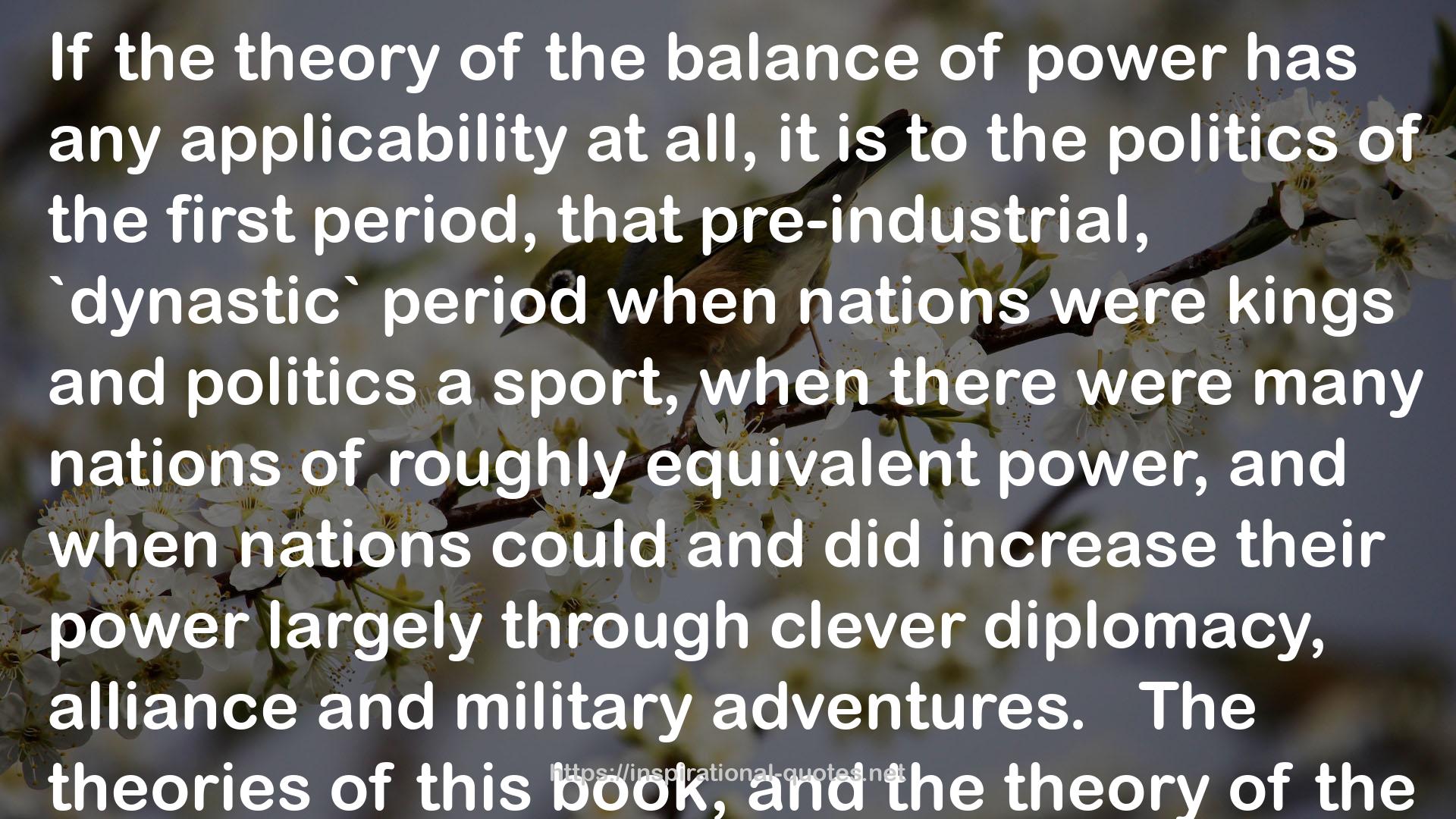" If the theory of the balance of power has any applicability at all, it is to the politics of the first period, that pre-industrial, `dynastic` period when nations were kings and politics a sport, when there were many nations of roughly equivalent power, and when nations could and did increase their power largely through clever diplomacy, alliance and military adventures.
The theories of this book, and the theory of the power transition in particular, apply to the second period, when the major determinant of national power are population size, political organization, and industrial strength, and when shifts in power through internal development are consequently of great importance. Differential industrialization is the key to understanding the shifts in power in the 19th and 20th centuries, but it was not the key in the years before 1750 or so and it will not always be the key in the future.
Period 3 will require new theories. We cannot predict yet what they will be, for we cannon predict what the world will be like after all the nations are industrialized. Indeed, we may not have nations at all. By projecting current trends we can make guessed about the near future, but we cannon see very far ahead. What will the world be like when China and India are two major powers, as it seems likely they will be? (1958 n.n.)...
We are all bound by our own culture and our own experience, social scientists no less than other men... Social theories may be adequate for their day, but as time passes, they require revision. One of the most serious criticisms that can be made of the balance of power theory is that it has not been revised. Concepts and hypotheses applicable to the 16th century and to the politics of such units as the Italian city states have been taken and applied, without major revision, to the international politics of the twentieth-century nations such as the United States, England, and the Soviet Union. (p. 307) "
― , World Politics
Image for Quotes

